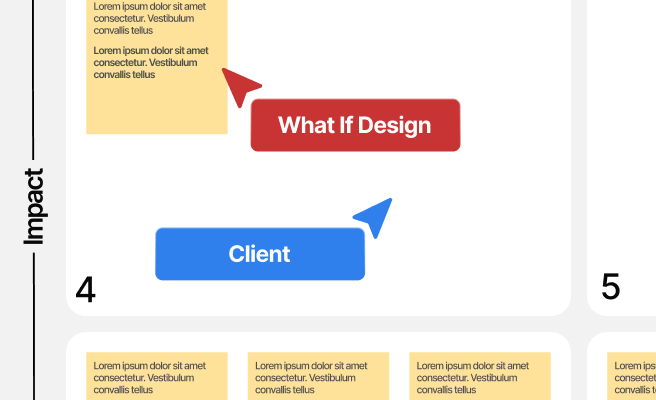User Surveys
<p>User surveys are a critical tool in product design, allowing companies to gather valuable insights directly from their target audience. By collecting data on user preferences, behaviors, and pain points, organizations can make informed decisions to enhance their products and services. In the climate tech sector, user surveys play an essential role in understanding how users interact with sustainable digital solutions, ensuring these products meet the needs of environmentally conscious consumers.</p>
<p>Historically, user surveys have been used across industries to tailor products to market demands. With advancements in technology, the methods of conducting surveys have evolved, making it easier to reach diverse audiences and collect comprehensive data. Digital tools like <a href="https://www.surveymonkey.com/" style="color: #2896FF; text-decoration: underline;">SurveyMonkey</a> and <a href="https://www.qualtrics.com/" style="color: #2896FF; text-decoration: underline;">Qualtrics</a> enable companies to design, distribute, and analyze surveys efficiently.</p>
<h2>Components of Effective User Surveys</h2>
<p>Creating an effective user survey involves several key components:</p>
<ul>
<li><strong>Clear Objectives:</strong> Define what you aim to achieve with the survey. This could range from understanding user satisfaction to identifying feature preferences.</li>
<li><strong>Targeted Audience:</strong> Ensure the survey reaches the right audience. For climate tech companies, this might mean reaching out to users who are actively seeking sustainable solutions.</li>
<li><strong>Relevant Questions:</strong> Ask questions that are directly related to your objectives. Use a mix of open-ended and closed-ended questions to gather both qualitative and quantitative data.</li>
<li><strong>Engaging Format:</strong> Keep the survey concise and user-friendly. Utilize digital platforms that are easy for respondents to navigate.</li>
</ul>
<h3>Benefits of User Surveys</h3>
<p>User surveys offer numerous benefits, including:</p>
<ul>
<li><strong>Data-Driven Decisions:</strong> Surveys provide empirical data that can guide product development and marketing strategies.</li>
<li><strong>User-Centric Design:</strong> Understanding user needs and preferences helps in creating products that truly resonate with the audience.</li>
<li><strong>Improved User Experience:</strong> Feedback from surveys can highlight areas for improvement, leading to a better overall user experience.</li>
<li><strong>Enhanced Credibility:</strong> Showing that you value user input can build trust and credibility with your audience, particularly in the climate tech sector where transparency is crucial.</li>
</ul>
<h3>Challenges in Conducting User Surveys</h3>
<p>Despite their benefits, user surveys also present certain challenges:</p>
<ul>
<li><strong>Survey Fatigue:</strong> Respondents may become tired of answering surveys, leading to lower response rates and less reliable data.</li>
<li><strong>Bias in Responses:</strong> Survey design and question phrasing can introduce bias, affecting the validity of the results.</li>
<li><strong>Data Analysis:</strong> Analyzing survey data, especially from open-ended questions, can be time-consuming and complex.</li>
</ul>
<h3>Case Study: Climate Tech Application</h3>
<p>Consider a climate tech startup focused on developing a carbon footprint tracking app. By conducting user surveys, the startup can gather insights on features that potential users find most valuable, such as real-time tracking, personalized tips for reducing emissions, or integration with other sustainability tools. For example, <a href="https://www.carbonfootprint.com/" style="color: #2896FF; text-decoration: underline;">Carbon Footprint</a> and <a href="https://www.climatiq.io/" style="color: #2896FF; text-decoration: underline;">Climatiq</a> offer tools that could benefit from user survey feedback to enhance their functionalities and user experience.</p>
<h2>Implementing User Surveys</h2>
<p>To effectively implement user surveys, follow these actionable steps:</p>
<p><strong>1. Define Your Goals:</strong> Clearly state what you want to learn from the survey. For instance, a product manager in a climate tech company might aim to understand user engagement with a new app feature.</p>
<p><strong>2. Design the Survey:</strong> Use digital tools like SurveyMonkey or Qualtrics to create the survey. Ensure the questions are clear, concise, and directly related to your goals.</p>
<p><strong>3. Distribute the Survey:</strong> Share the survey through multiple channels, including email, social media, and within your product interface. Target your audience based on their relevance to the survey topic.</p>
<p><strong>4. Analyze the Data:</strong> Use the analytical tools provided by survey platforms to interpret the data. Look for patterns and actionable insights that can inform your product decisions.</p>
<p><strong>5. Act on Feedback:</strong> Implement changes based on the survey results. Communicate these changes to your users to show that their feedback is valued and has a tangible impact.</p>
<h2>Conclusion</h2>
<p>In summary, user surveys are an indispensable tool for understanding and improving user experience, especially in sectors like climate tech where user engagement and feedback are crucial. By using surveys effectively, companies can make data-driven decisions, enhance their products, and build stronger relationships with their users. To learn more about improving your survey strategies, consider exploring resources from <a href="https://www.qualtrics.com/blog/" style="color: #2896FF; text-decoration: underline;">Qualtrics Blog</a> or <a href="https://www.surveymonkey.com/mp/market-research/" style="color: #2896FF; text-decoration: underline;">SurveyMonkey’s Market Research resources</a>.</p> <p>If you’re looking for inspiration to elevate customer and user experience for enterprise-grade products, View our work with the Ministry of Health of Saudi Arabia for curating the UX of an <a href="https://www.whatifdesign.co/work/enterprise-software-for-hospitals" style="color:#2896FF; text-decoration:underline;">Asset Management Tracking Platform</a></p>
<p>Ready to get started? <a href="https://cal.com/akhilak/what-if-design?duration=30" style="color:#2896FF; text-decoration:underline;">Book a 1:1 consultation call</a> with us today.</p>

Let's scale your impact with great design.
Free consultation, no sales pitch
Thank you! Your submission has been received!
Oops! Something went wrong while submitting the form.
Let’s talk
Nothing great is built alone.
Let’s connect about your vision, our work and how we can collaborate.
Get in touch

